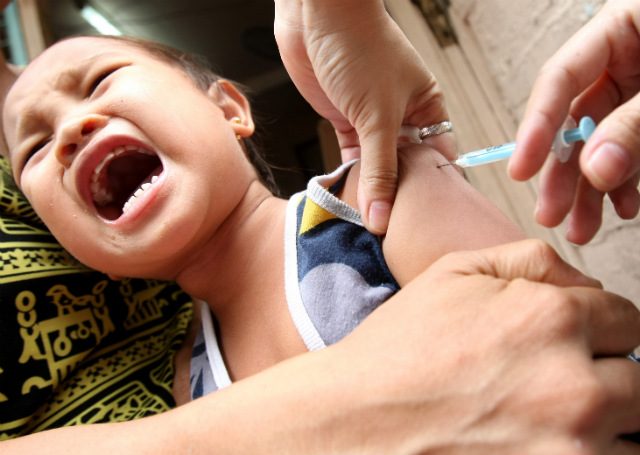SUMMARY
This is AI generated summarization, which may have errors. For context, always refer to the full article.

MANILA, Philippines – The Philippines’ 2014 measles outbreak – the worst since 2010 – has “exported” the highly contagious disease to other countries, a Department of Health (DOH) official said on Wednesday, August 27.
“Philippines became the amplifier of measles infection to other countries. Nage-export na tayo ng (We already export) measle cases, importations to other countries like US, Japan, Australia, Singapore,” Dulce Elfa of the health department’s Family Health Office said at a seminar.
For 2014 alone, the DOH already recorded 6,287 laboratory-confirmed cases of measles. (READ: DOH steps up drive vs measles amid outbreak)
Elfa said the top 3 regions with the most measle cases are the National Capital Region, Calabarzon and Central Luzon. Most of the cases are unvaccinated children under two years of age.
Measles is a viral, highly-contagious respiratory disease. Infected persons exhibit symptoms such as high fever, red eyes, runny nose, and cough. Rashes appear throughout the body after two days.
The illness can be spread through cough or direct contact with body secretions of an infected person. A person with measles can pass the disease on to 18 other people.
Factors
Elfa enumerated 6 main reasons for the outbreak:
- Variation in subnational coverage for the 1st dose measles vaccination
- Slow uptake for the MCV2
- Large birth cohort of 2.7 million leads to quick accumulation of susceptibles and densely populated in many areas
- Immunization coverage in 2011 campaign was not high and uniform from area to area
- Series of major disasters from December 2012 to end of 2013 affected some regions, with significant damage to general infrastructure, health facilities, staff capacities and service implementation
- Widespread domestic population movements further aggravated by disasters
Data from the National Epidemiology Center showed that in 2013, there was a large drop in the percentage of children who completed their two vaccines for protection from measles.
From the 91% of children who were administered their first vaccine, only 55% came back for their second vaccine. (READ: DOH: Measles upsurge due to kids missing free vaccination)
The health department prescribes that children should get their first measles vaccine at 9 to 11 months old, and their booster shot at 15 months old. As Health Assistant Secretary Eric Tayag earlier said, the first vaccine is 90% effective, while the booster is 100% effective.
As of July 5, the country’s measles incidence rate is at 162 people for every population of 1 million. There are also 16,214 confirmed cases of measles, which include both laboratory-confirmed cases and epidemiologically-linked ones.
“Halos lahat ng regions may outbreak na ng measles (Almost all regions already have an outbreak),” Elfa noted.
Health Secretary Enrique Ona earlier explained that a measles outbreak means “there have been cases of a disease – either suspected or confirmed – in a community or a locality where in the past there was none.”
There is also a high number of confirmed cases among children below 9 months old who are not yet eligible for vaccination.
DOH is set to conduct a month-long nationwide vaccination in September to interrupt the transmission of measles and rubella, and to protect Filipinos from the consequences of importation of wild poliovirus. (READ: Measles, dengue, and public health)
|
VACCINES |
AGE GROUP |
ESTIMATED NO. OF CHILDREN FOR VACCINATION |
|
MEASLES-RUBELLA |
9 months to under 5 years old |
11 million |
|
ORAL POLIO VACCINE |
At birth up to under 5 years old |
13 million |
The department’s strategy will be to reach every purok (area) and achieve over 95% coverage. Health service delivery will also be re-established in disaster-hit areas.
“Before the year ends sana makita natin drop [in] cases (Before the year ends we hope to see a drop [in] cases),” Elfa said. – Rappler.com
Add a comment
How does this make you feel?
There are no comments yet. Add your comment to start the conversation.